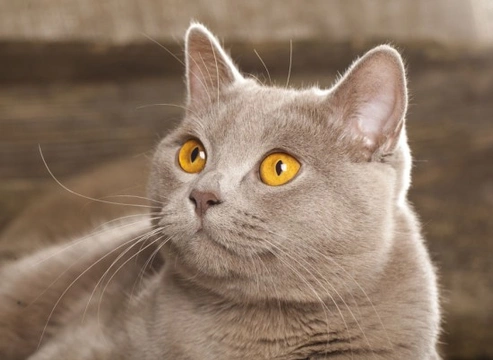Pets
Pets for studWanted petsBreedersAccessories & services
Knowledge hub
Support
Support & safety portal
High Blood Pressure in Cats
Like humans, cats can also suffer from high blood pressure (known as Hypertension), a condition more frequently seen in older cats. However, there is a difference in the type of high blood pressure experienced by humans and that of cats, as feline high blood pressure tends to occur as an underlying problem related to another medical condition (‘secondary’ hypertension) whereas in people suffering from ‘primary’ hypertension, there is often no specific underlying disease. The most common diseases to be linked to feline hypertension are chronic kidney failure (one of the highest causes of death in domestic cats, as very few simply die from old age), and hyperthyroidism.Over a period of time, feline hypertension can damage four of the major organs:
Brain and Nervous System
Because of disruption to the blood supply, hypertension can cause swelling of the brain leading to neurological signs such as lack of balance, seizures, dementia and coma which leads ultimately to death.
Eyes
The effect of bleeding into the eyes caused by hypertension can lead to detachment of the retina and can ultimately result in the risk of permanent blindness. It is sometimes possible to see blood appearing at the front of the eye, even without veterinary ophthalmic instruments.
Heart
Hypertension can cause a thickening of one of the chambers of the heart which affects the general heart function with blood clots causing loss of blood supply, and it is then much harder for the heart to pump blood round the body. Cats suffering from high blood pressure may become breathless and lethargic, and could ultimately suffer from heart failure.
Kidneys
The kidneys are affected by hypertension leading to a high risk of kidney failure, and it is very likely to make an existing renal problem far worse.
Symptoms
Cats suffering from high blood pressure as a result of hyperthyroidism, for example, may display a significant weight loss (despite a very healthy appetite) as well as hyperactivity. If the condition advances to the extent that blood is detected in the eyes, or the cat appears to be having problems with his sight, it may have advanced too far to be treated satisfactorily. It may be possible to repair a torn retina, but once it has actually detached this is not generally treatable and blindness is sadly the most likely outcome, although many cats can cope very well with visual impairment if the level of blood pressure can be lowered and then stablilised.
Diagnosis
It is often difficult to diagnose hypertension in itself without clinical tests being carried out by your vet, as the symptoms can be very varied and may well relate to the primary disease. Tests are usually carried out at the surgery, and it only takes about 20-30 minutes to produce an analysis report, which your vet will be able to explain to you. Some cats with high blood pressure don’t show any discernable clinical symptoms until the condition has reached an advanced state, but early recognition of hypertension is very important to minimise the severe and often permanently damaging effects of persistently high blood pressure on the eyes and other vital organs. Hypertension is most common in cats over the age of about seven, and regular blood pressure tests will help to alert your Vet of any problems. Various means of assessing a cat’s blood pressure are now available, with the most common being similar to that often used for humans, with an inflatable pad placed around one of the legs or even around the tail.
Treatment and Diet
High blood pressure in cats can be managed to a certain extent with anti-hypertensive drugs, the most effective being ‘calcium channel blockers’ containing Amlopidine. ‘ACE inhibitors’, containing Benazepril, (usually under the trade name of Fortecor) are most commonly used for the control of renal failure but they also have some limited success in this situation. The success of the treatment also depends on how advanced the hypertention has become when it is diagnosed, but the current prescribed treatments do not appear to have any debilitating side effects, and may well be able to extend your cat’s quality of life for some considerable time if their blood pressure can be lowered. If hyperthyroidism is identified as the underlying cause of the hypertension, treatment of the over-riding problem may also resolve the high blood pressure. Treatment is easier to manage in instances where hypertension is the primary area of concern and there are no other underlying medical conditions, and in cases like this, complications (such as eye damage) can normally be avoided if high blood pressure is identified early on. It is often advised to feed a cat that has been diagnosed with hypertension on a low salt diet, avoiding ‘treats’ as these often have a high salt content. Most cats can still be fed on a normal proprietary cat food (and you should check the label and choose one with a lower salt content), although cats with chronic kidney failure will probably benefit from a special diet, usually available from your Vet, where protein and phosphate are restricted. Fortunately, manufacturers of these special diets have now managed to produce a formula that is more palatable to cats, and many are now perfectly happy to eat them. The study of hypertension in cats is still a relatively new area, although there are a currently a number of research programmes looking at this field of feline medicine.



